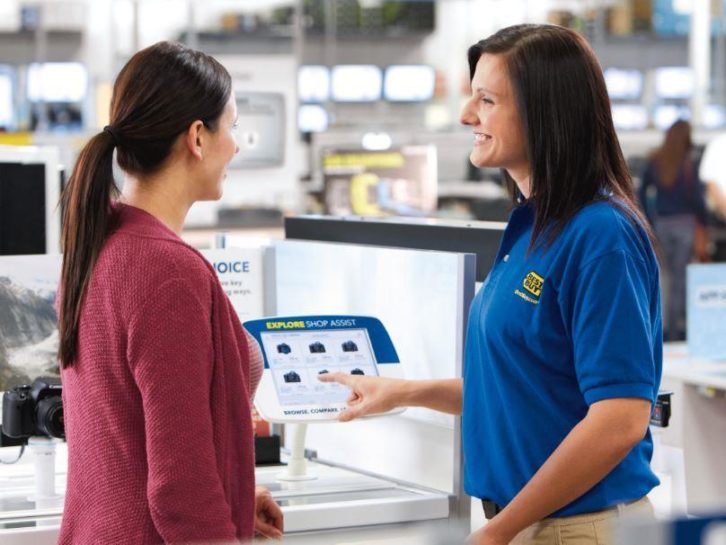 Since the advent of digital transformation, consumers have a myriad of virtual shopping options. As a result, they will be unlikely to have any interest in staying on sites when their online experience is slow, cumbersome and less than satisfying. A virtual environment that falls short will jeopardize long-term customer loyalty, especially in a post-COVID 19 world where customers are starting to return in greater numbers to brick-and-mortar stores.
Since the advent of digital transformation, consumers have a myriad of virtual shopping options. As a result, they will be unlikely to have any interest in staying on sites when their online experience is slow, cumbersome and less than satisfying. A virtual environment that falls short will jeopardize long-term customer loyalty, especially in a post-COVID 19 world where customers are starting to return in greater numbers to brick-and-mortar stores.

Customer loyalty and growth require traditional and personalized interactions if virtual business is to compete with brick-and-mortar stores. Accordingly, B2B and B2C companies must do a better job of taking the pulse of customers by listening to their concerns, expectations and needs on a daily basis. With that information, they can implement the strategies and best practices that will most likely retain valued customers.
The digital environment vs. brick and mortar
Unlike traditional retail locations in which customers browse—possibly ready to spend on goods or services—the digital platform is an open market that requires consumers to do nothing more than render choices with just their fingertips. As such, the virtual environment requires companies to evaluate their platform’s delivery and how it fares against the competition. That’s why continuous evolution and improvement have become a daily challenge. After all, not every organization can keep up with the Amazons, Walmarts and Targets of the world, but that does not mean smaller businesses won’t be successful with their digital platforms.
Begin by ensuring customer data and data exchange platforms that specifically target a customer base fit with the company mission. Be prepared to deep-dive data on such issues as shoppers leaving the commerce site after browsing without placing an order or determining whether the site poses navigation issues for those not fully tech-savvy. A well-structured data program should tell companies why they are losing business and indicate the changes needed to rectify the problem. Platforms like Adobe can help capture that information and analyze it to tweak product offerings, pricing and site navigation on a regular basis.
It’s all about designing the optimum experience online for customers and potential customers who generally surf the ‘net on a regular basis. Technology professionals need to learn the features online customers seek, how the site can be made more readily accessible to them and what will make consumers return on a regular basis.

Evolve every single day
Digital marketers must respond quickly, in real time in fact, if they expect to develop customer engagement. The odds for success favor those organizations and companies with a comprehensive data strategy. Anything less is a loss of a valuable business opportunity. Positive, attention-grabbing first interactions are essential. Recognize that building devoted customer loyalty in the digital environment takes time and continuous nurturing if businesses expect to gain market share and meaningful engagement through creation of appropriate rewards .
Here’s another good practice. Don’t be afraid to learn from the big boys. For example:
- Customer experience: importance of ease of returns and prompt issue resolution.
- Choices: i.e., suggesting related items “you might also like.”
- Simplicity/ease of use: getting around the site, search engines
Digital outreach
Successful virtual businesses understand that a strategy for attracting customers starts by tying into their “life events” through effective data mining of their previous searches and purchases, which can create a better experience and foster loyalty. Data that reveals where they are in life—college, established careers, travel interests, marriage and children, etc. provides opportunities for attractive offer targeting.
Wealth management giant Morgan Stanley, for example, created an online digital financial institution that revealed children of older clients aren’t interested in the traditional brick and mortar bank. The financial giant responded by purchasing E-Trade, for those who would rather “robo-trade” than speak with a real person about their investments. Also, a commitment to protecting customer privacy while collecting customer data can never be under-emphasized. The last thing a seller needs is a heavy fine for crossing the line for unethical customer data usage and the negative publicity that is bound to follow.
 Know what really matters
Know what really matters
Digital retailers, financial firms and other online services compete in an ever-changing, expanding and extremely competitive digital environment, yet the need to attract those who prefer shopping in a traditional, real world environment remains. That makes ease of use and customer-centric features important for both groups when building a following.
It’s about agility and adaptation to changing market needs, so listen to customers. They will tell you what they want, how they want it and at what price. The path to long-term customer loyalty and business growth starts by concentrating your data on the ever-changing nature of digital possibilities and opportunities—and promptly updating it.
About the Author:
Harveer Singh is a technology executive with over 17 years of experience and is currently employed at Western Union. His previous roles included high-level positions at EY, Deloitte, IBM and Accenture. His responsibilities incorporated system platform design, system architecture, big data, DevOps and computer engineering. For more information, contact [email protected].
See also: Another View: How To Win The War For Talent In The Gig Economy













